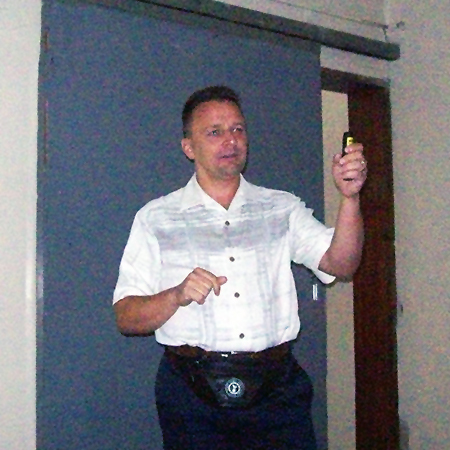Dec. 13, 2016
 According to the Kenyan Network of Cancer Organizations, cancer is the third-highest cause of mortality in Kenya, after infectious diseases and cardiovascular diseases.
According to the Kenyan Network of Cancer Organizations, cancer is the third-highest cause of mortality in Kenya, after infectious diseases and cardiovascular diseases.
Between 70% and 80% of cancer cases are diagnosed in late stages because of a lack of awareness, inadequate diagnostic and treatment facilities, the high cost of treatment and a high poverty index. Most cancer patients in Kenya have to wait over a year from the time of diagnosis to have access to radiation therapy services.
In August 2016, ASRT Foundation donors made it possible for me to help create sustainable changes that would help improve patient care in Kenya. As an ASRT Foundation Community Outreach Fellow in partnership with RAD-AID International, I worked at Kenyatta National Hospital in Nairobi, which is the only hospital in the country dedicated to cancer treatment. The hospital receives patients from all 47 counties in the country. Even though it is the largest publicly funded hospital in Kenya, with over 2,000 inpatient beds, the hospital does not have the financial resources to operate at the level one would expect at such a facility in the United States or Canada.
When my team — Dr. Shilpen Patel and Regina Ley, A.S., R.T.(T) — and I first arrived at the hospital, I was surprised by the conditions of the facility and the overcrowded waiting rooms and hallways. The hospital is showing its age due to a lack of funding for maintenance. Patients were lined up in the hallways, and the staff had to maneuver around them to go about seeing other patients. The way they moved through the crowd suggested the hospital was always that busy. To provide a little perspective for you, I’d like to say that in the United States there are 12.31 linear accelerators per one million people; Kenya has one public linear accelerator for 45 million people.
To my delight, the lack of resources did not negatively affect the demeanor and attitude of the medical staff. The professionals we worked with were motivated and worked hard to provide their patients with the best care possible with the old equipment that was available.
Our team quickly began working toward our project goals. Since the cancer center was just starting to use computed tomography-based planning, the knowledge level of the staff was limited. My goal, as the medical dosimetrist on the team, was to provide the training and educational materials that would help elevate the radiation therapists’ knowledge of medical dosimetry and treatment planning.
The biggest challenge I noticed in terms of treatment planning was the lack of knowledge and experience the staff had in 3-D conformal planning. The hospital simply did not have the resources to provide proper training materials and demonstration. During my time there, I worked one-on-one with the treatment planning radiation therapists to explain 3-D conformal planning to them and then demonstrate the concept on actual patients. It was rewarding to be a part of helping them gain a better understanding of this important aspect of treatment planning, knowing that it would directly improve the care they are able to offer their patients.
I also gave a one-hour presentation to the entire department about educational models for training staff, practical ways to plan treatments, dose volume histograms and QUANTEC guidelines. I spent three days at the Kenyatta National Hospital, and I know that the knowledge I shared with the therapists there will positively impact future therapists and patients at the hospital.
I plan to stay in touch with my colleagues in Kenya and continue to be a resource they can rely on to advance their knowledge and skills in cancer treatment and to continue to improve the care they provide their patients.
The work the Foundation and RAD-AID are doing around the world is invaluable and is made possible because of generous donors. I encourage anyone reading this to support this important work. Your support is vital to sending outreach teams to facilities such as Kenyatta National Hospital.
When you make a donation to the Foundation, you are helping to promote and expand outreach opportunities for medical imaging and radiation therapy professionals. But more than that, you are changing lives and creating a brighter future for R.T.s and their patients around the globe.